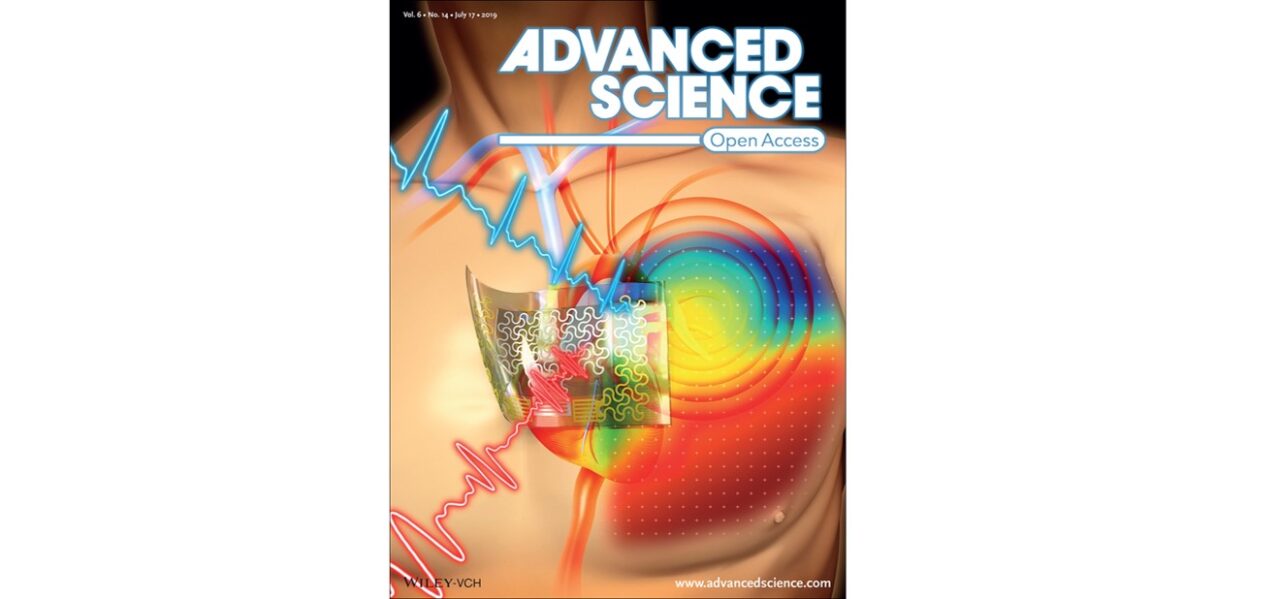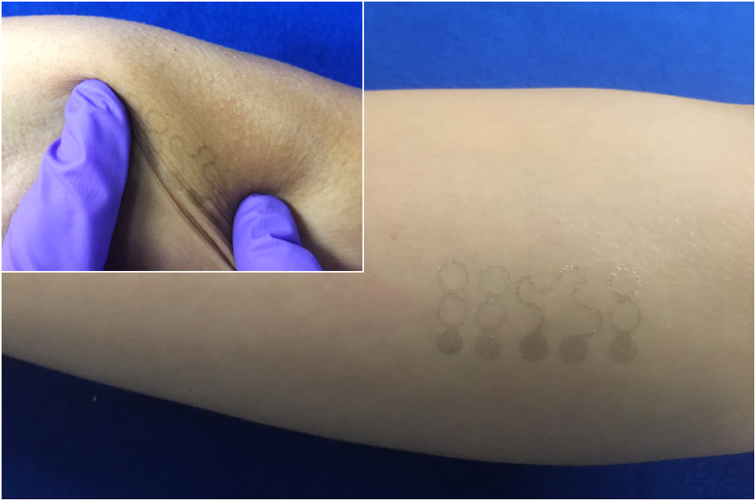
Our recent paper “Chest-Laminated Ultrathin and Stretchable E-Tattoo for the Measurement of Electrocardiogram, Seismocardiogram, and Cardiac Time Intervals” is selected as the front cover of Advanced Science. We built a noninvasive e-tattoo capable of synchronous electrocardiogram (ECG) and seismocardiogram (SCG) sensing, which can also be used for beat-to-beat blood pressure (BP) inference. 3D digital image correlation (3D DIC) was used to map chest vibration due to heart beat, which is useful to determine the best location to laminate the e-tattoo.









